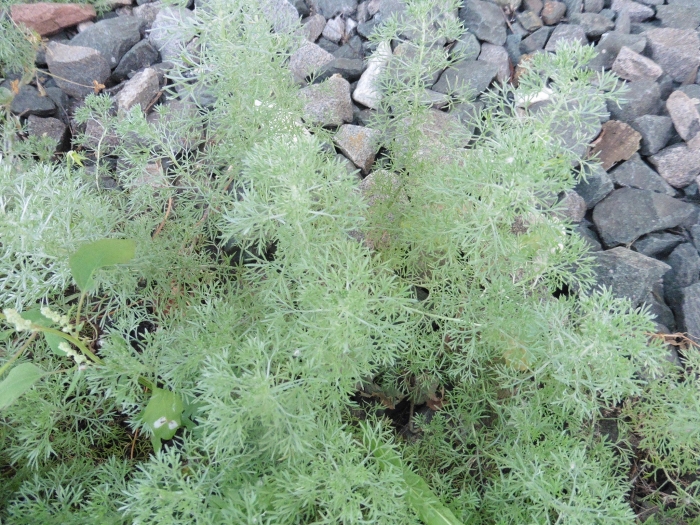Austrian Wormwood
(Artemisia austriaca)
Austrian Wormwood (Artemisia austriaca)
/
/

Силаева Татьяна Борисовна
Public Domain
Image By:
Силаева Татьяна Борисовна
Recorded By:
Copyright:
Public Domain
Copyright Notice:
Photo by: Силаева Татьяна Борисовна | License Type: Public Domain | License URL: http://creativecommons.org/publicdomain/zero/1.0/ | Rights Holder: Силаева Татьяна Борисовна | Publisher: iNaturalist | Date Created: 2020-09-07T14:27:43-07:00 |

















































Estimated Native Range
Summary
Artemisia austriaca, commonly known as Austrian Wormwood, is a perennial herb that is semi-evergreen to evergreen, depending on the climate. It is native to a variety of habitats including dry grasslands, rocky slopes, and steppes in Europe and Central Asia. This subshrub typically reaches a height and width of 3-5 feet (0.9-1.5 meters), forming a bushy clump of silvery-gray foliage. The leaves are finely divided and aromatic, which is characteristic of the genus Artemisia. From mid to late summer, it produces small, inconspicuous white flowers that are less showy than its foliage.
Austrian Wormwood is valued for its silvery foliage and its ability to thrive in poor, dry soils, making it an excellent choice for xeriscaping and rock gardens. It is also used in traditional medicine and as a culinary herb, particularly in flavoring spirits and wines. In the garden, it requires minimal maintenance, tolerating drought and infertile soils, though it prefers full sun and well-drained soil. While generally disease-free, it can occasionally suffer from root rot if overwatered. It is also resistant to deer and rabbits due to its aromatic leaves.CC BY-SA 4.0
Austrian Wormwood is valued for its silvery foliage and its ability to thrive in poor, dry soils, making it an excellent choice for xeriscaping and rock gardens. It is also used in traditional medicine and as a culinary herb, particularly in flavoring spirits and wines. In the garden, it requires minimal maintenance, tolerating drought and infertile soils, though it prefers full sun and well-drained soil. While generally disease-free, it can occasionally suffer from root rot if overwatered. It is also resistant to deer and rabbits due to its aromatic leaves.CC BY-SA 4.0
Plant Description
- Plant Type: Subshrub
- Height: 3-5 feet
- Width: 3-5 feet
- Growth Rate: Rapid
- Flower Color: White
- Flowering Season: Summer
- Leaf Retention: Deciduous
Growth Requirements
- Sun: Full Sun
- Water: Low
- Drainage: Medium
Common Uses
Bee Garden, Bird Garden, Border Plant, Butterfly Garden, Deer Resistant, Drought Tolerant, Erosion Control, Fragrant, Rabbit Resistant, Rock Garden, Salt Tolerant
Natural Habitat
Dry grasslands, rocky slopes, and steppes in Europe and Central Asia
Other Names
Common Names: Prairie Sagewort, Mugwort, Sagebrush, Österreichischer Beifuß, Donaumalört
Scientific Names: , Artemisia austriaca, Artemisia repens, Artemisia nivea, Artemisia orientalis, Artemisia frigida var. gmeliniana, Absinthium frigidum var. biebersteinianum, Absinthium frigidum var. frigidum, Absinthium frigidum var. geblerianum, Absinthium frigidum var. gmelinianum
GBIF Accepted Name: Artemisia austriaca Jacq.